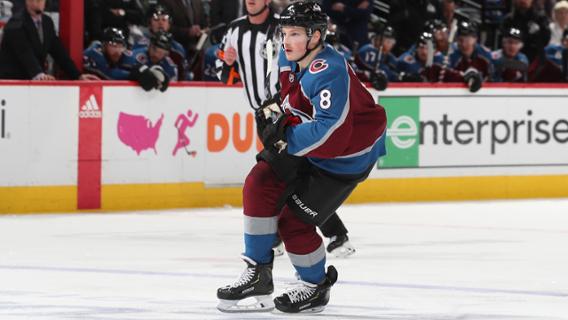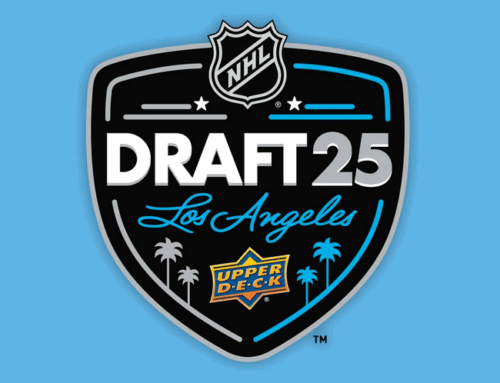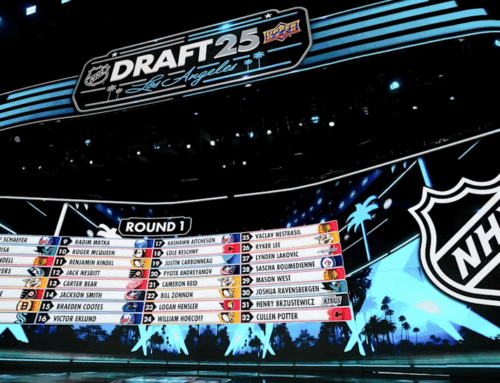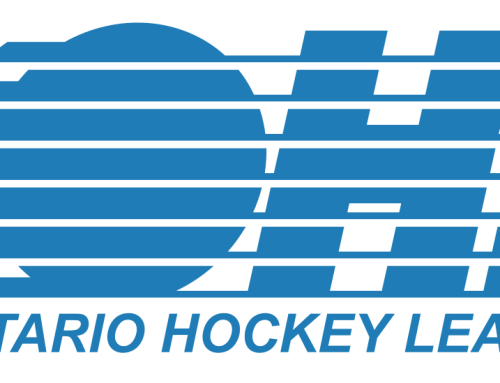Prospect Ramblings: Calder Power Rankings
Brayden Olafson
2019-10-16
This summer I had the opportunity to make my first ever contribution to the Dobber Hockey Fantasy Guide under the section of Calder Candidates for the 2019-20 NHL season. With the NHL campaign now finally rolling, I thought it might be appropriate to take advantage of my bi-weekly ramblings and continue the segment in the context of power rankings. Admittedly, of the names listed in today’s first edition of the power rankings, four were exempt from my list in the Fantasy Guide. The 2019-20 slate remains young though, and the rankings will continue to be published as a means to monitor rookie progress and success over the course of the year ahead. With that said, I hope you enjoy the first edition of my Calder Power Rankings.
1. D, Cale Makar, Colorado Avalanche (-)
Playing predominantly alongside Nikita Zadorov at 5-on-5, the UMass Amherst alumni is off to a wickedly hot start with the Av’s in his rookie draw. The team’s official second-pair have contributed modestly at even strength, however, Makar has shone as a solo mainstay on the point for the Avalanche powerplay. The two knocks on Makar’s game thus far are one, his lack of shots (three) and as advanced statistics are concerned, Makar has a slightly below average relative Corsi ranking to his fellow Av’s. With his absurdly small amount of shots on net and resultant lack of goals, it’s difficult to aggressively critique his production as either sustainable or unsustainable. If his production continues on the man advantage though, it’s unlikely that he comes off of it any time soon and a snowball effect could take hold in terms of his production.
2. RW, Victor Olofsson, Buffalo Sabres (-)
The rookie points leader became somewhat of a sleeper pick for pundits over the offseason. With Buffalo opting for an uneventful free-agent period and allowing Jason Pominville to walk, the door swung open for Olofsson to make his mark. Running with a highly unsustainable 33% shooting rate, I struggle to put Olofsson ahead of Makar, despite his lofty five tucks and a combined five powerplay points in six contests. For now, the 24-year-old owns a spot on the Sabres highly productive top line as well as top powerplay unit. His sustained production will hinge strongly on that factor, however, a regression in scoring rate is likely regardless of whose passes he’s shooting.
3. RW, Ilya Mikheyev, Toronto Maple Leafs (-)
Just when you thought that the Leafs’ were finished icing Calder contenders for another decade, 25-year-old, KHL veteran Ilya Mikheyev steps up to the plate as the team’s depth savior. A tenacious and firey forechecker, Mikheyev has made an outstanding first impression in Toronto, quickly becoming a fan favorite with his five points through six games. His immediate chemistry with Alexander Kerfoot and Trevor Moore seems to be allowing him to play at a familiar pace. His brute force playing style means that Mikheyev is capable of getting plenty of pucks on net, meaning that at 16.7%, his conversion rate is at least somewhat sustainable.
4. C, Martin Necas, Carolina Hurricanes (-)
After predominantly serving his D+2 campaign with the ‘Canes farm club in Charlotte, Martin Necas seems to have come back to Raleigh this fall hungry to stick around. The Czech forward has been as consistent as one could ask for in his third kick at the can, earning points in four of his first six opportunities to do so. As the team’s third-line center, Necas has managed 15 shots on net and played an above-average 200-foot game. As his production stands, Necas finds himself at fourth on today’s list, but the potential for improvement over the next few months certainly exists in this case.
5. LW/RW, Alexandre Texier, Columbus Blue Jackets (-)
All things considered, French-born Alexandre Texier is certainly working out to be an absolute steal for the Blue Jackets. Although offensive consistency has not been his forté over the course of his first half-dozen games, defensive play has been. His relative Corsi is the strongest amongst NHL rookies and he’s accumulated a handful of both hits and takeaways. Texier has found himself being deployed sparingly on the man advantage, with even-strength deployment predominantly alongside Oliver Bjorkstrand and Alexander Wennberg. Considering how John Tortorella is likely demanding the 20-year-old to play, I think it’s fair to say he’s exceeded expectations thus far.
6. C, Cody Glass, Vegas Golden Knights (-)
Finding himself a home on the Knights top powerplay unit has helped to boost Cody Glass’ confidence as a rookie. Through his first four contests in the league, he’s accumulated both a pair of goals and a pair of assists, most of which coming alongside favorable linemates Max Pacioretty and Mark Stone. As of late, Glass has found himself being asked to drive his own offense, however, in the Knights depth alongside Cody Eakin and Valentin Zykov. Maintaining some production as a driving force on that line could offer a major boost to his NHL resume.
7. RW, Sam Lafferty, Pittsburgh Penguins (-)
Serving the Penguins as a fourth-line winger, Sam Lafferty has kicked off the 2019-20 slate with an outstanding points/60 rate of 5.4. The 24-year-old’s offense has been a desirable complement to the Penguins remaining superstars, however, it’s at the cost of one of the most unsustainable shooting rates among rookie scorers. While he currently sits tied third for rookie scoring, it’s unlikely that we see him anywhere near the top ten in 30 days.
8. RW, Trevor Moore, Toronto Maple Leafs (-)
The Toronto Maple Leafs feisty third line offers up their second Calder contender from the right-wing. Trevor Moore has contributed to the Buds offense in a regular manner through the first six games of the year with three goals and an assist. Moore’s offense has come in the near-absence of powerplay deployment, albeit, with an inflated shooting percentage.
9. D, Quinn Hughes, Vancouver Canucks (-)
The eldest of the Hughes brothers and the one that I didn’t pick as my projected Calder winner during the preseason has thus far been the more successful of the siblings. Quinn has found himself a home in the Canucks top-four in addition to a partial share of the teams’ powerplay deployment. His respectable three points through four games played are good for third in rookie defenseman scoring, albeit at a moderate-high shooting percentage of 14.3%.
10. C, Carter Verhaeghe, Tampa Bay Lighting (-)
The fact that the Lightning have yet again found a way to complement their depth with a veteran of their farm system should come as a surprise to no one. The highly experienced AHL veteran brings an offensive touch to the Bolts’ depth as proven early by his heavy shot attempt share. Thus far, the results haven’t come to fruition, but all signs indicate that it may only be a matter of time.
Honorable Mentions
A small sample size was certainly a factor in the first edition of this list, allowing for inflated shooting percentages and growing pains/chemistry issues in the cases of players who may have missed the list. In any case, these rankings will remain fluid and I’m excited to see how they take form in the months ahead!
***







